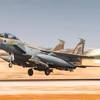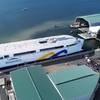Seven cabin products delivered by NORAC have completed rigorous high-level shock and vibration testing. The company says that the shock and vibration tests were necessary to qualify its range of cabin products for the demanding naval market.
“Shock and vibrating testing creates an environment that will show in a short period of time how products stand under adverse field conditions and through out years of change. Though not that common when delivering to merchant and cruise vessels, this type of testing is very necessary to NORAC’s new business area: naval ships and frigates, says Frank Robertsen, director of marketing, NORAC.
Electro-dynamic and servo-hydraulic testing methods were used to replicate the vibration and shock of sea conditions that NORAC components would be subjected to under real conditions.
Small cabins consisting of the various NORAC products were subject to moderate and high shock and vibration testing levels. High testing qualifies delivery to a frigate whereas moderate testing is applicable to specific areas onboard a naval ship and/or other vessel types.
“Many products expand and contract due to the ever-changing environmental conditions. Before products are placed in the marketplace to face these conditions, the must be tested to ensure reliability,” said Ole Bulien, QA director, NORAC.
The tests were carried out in accordance with German and NATO standards and meet the required naval specifications.
Longitudinal, transversal and vertical vibration testing, as measured near the machine room onboard a frigate at full speed, is amplified three times in comparison to that of a normal merchant vessel.
“The frigate specification is a very high level of vibration. A cabin surviving this type of treatment from this location is documented to survive over 10,000 hours at full speed,” said Bulien.
Sponsored Content
Experience Custom Yacht Signs and Designs Tailored to Perfection!

April 2025
 Read the Magazine
Read the Magazine

 Read the Magazine
Read the Magazine
This issue sponsored by:

Saltchuk Doubles Down on Workforce Development Investments
Subscribe for
Maritime Reporter E-News
Maritime Reporter E-News is the maritime industry's largest circulation and most authoritative ENews Service, delivered to your Email five times per week








